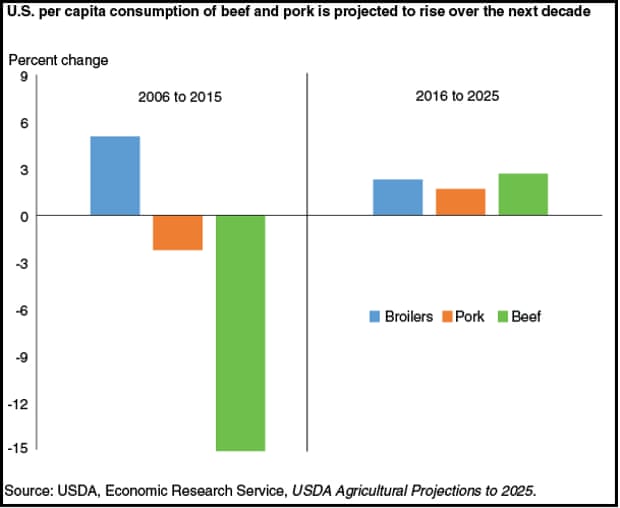By TheGuardin
New federal rules went into effect last week that ban the use of antibiotics to help livestock gain weight, a practice that leads to antibiotic-resistant bacteria that pose health threats to humans. Meat producers will also need a veterinary prescription to use these drugs for other purposes such as treating or preventing disease.
The new rules by the Food and Drug Administration (FDA) represent a broad attempt to limit antibiotic use in farm animals, not just banning a class of antibiotic for a type of livestock. Historically, antibiotics are given regularly to chicken, cattle, pigs and other animals not only to treat diseases but also to prevent them and to make the animals grow faster and bigger. But most of the antibiotics given to them are also used to treat humans and referred to as “medically important”.
We're eating more antibiotic-free chicken. But what about beef?
Sasha Stashwick and Lena Brook
Read more
The widespread use of antibiotics in both animals and humans has contributed to the rise of so-called superbugs, bacteria that have grown resistant to antibiotics. Drug-resistant infections currently kill an estimated 700,000 people worldwide each year, a number that could increase to 10 million by 2050 if the drug resistance trend continues, according to a report commissioned by the UK government. In the US, at least 2 million people get sick from drug-resistant bacteria each year, and roughly 23,000 die annually, said the Centers for Disease Control and Prevention (CDC).
Critics contend the FDA’s new rules are weak. The Natural Resources Defense Council, for example, says the rules would still let farmers use antibiotics for disease prevention, an allowance that continues to sanction the prolonged use of the drugs.
Below are some charts that show why the widespread use of antibiotics threatens public health.
The new rules by the Food and Drug Administration (FDA) represent a broad attempt to limit antibiotic use in farm animals, not just banning a class of antibiotic for a type of livestock. Historically, antibiotics are given regularly to chicken, cattle, pigs and other animals not only to treat diseases but also to prevent them and to make the animals grow faster and bigger. But most of the antibiotics given to them are also used to treat humans and referred to as “medically important”.
We're eating more antibiotic-free chicken. But what about beef?
Sasha Stashwick and Lena Brook
Read more
The widespread use of antibiotics in both animals and humans has contributed to the rise of so-called superbugs, bacteria that have grown resistant to antibiotics. Drug-resistant infections currently kill an estimated 700,000 people worldwide each year, a number that could increase to 10 million by 2050 if the drug resistance trend continues, according to a report commissioned by the UK government. In the US, at least 2 million people get sick from drug-resistant bacteria each year, and roughly 23,000 die annually, said the Centers for Disease Control and Prevention (CDC).
Critics contend the FDA’s new rules are weak. The Natural Resources Defense Council, for example, says the rules would still let farmers use antibiotics for disease prevention, an allowance that continues to sanction the prolonged use of the drugs.
Below are some charts that show why the widespread use of antibiotics threatens public health.
Americans’ meat diet has changed. In the past decade, we’ve eaten less beef and pork, but more chicken. But the government is projecting an increase for all three types of meat as their prices fall, a result of a growing demand for them domestically and overseas and falling cost to feed the animals. Beef consumption is forecast to grow 11.7% and pork 10.3% from 2016 to 2025.
The term “broilers” in the chart refers to young chickens (as opposed to, say, hens raised primarily for eggs), which make up the bulk of chickens eaten.
When bacteria that dwell in farm animals develop resistance to drugs, they are more likely to reach humans. Some of the paths for the bugs take to get to their human hosts include handling and eating raw or undercooked and contaminated meat, drinking or swimming in water contaminated with animal feces and taking care of animals.
Source: https://www.theguardian.com/sustainable-business/2017/jan/08/fda-antibiotic-use-in-livestock
